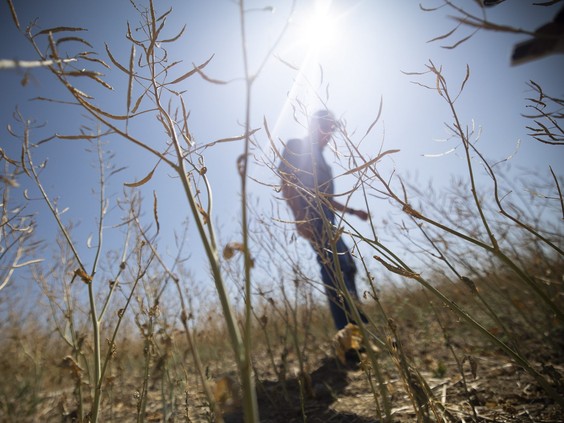
Brandon Harder
Regina Leader-Post
It’s just got to rain.
Or snow.
Don Connick and his neighbours don’t care which. They’ll take either. They need it in the worst way.
The semi-retired Gull Lake-area farmer and other producers in the southwest were bracing for a bad year, and by-and-large they got it. The summer drought was just one in a series of dry years in the region.
In Regina, politicians were talking numbers Monday. The province expects hundreds of millions of extra dollars to be spent on the situation, as noted in its mid-year financial report.
“Agriculture expense is forecast to be $853.0 million higher than budgeted, primarily due to increased crop insurance claims, a result of severe drought in parts of the province in the summer of 2023,” stated a government news release.
Connick says producers in the most drought-stricken region of the province are grateful for the government help.
“I think crop insurance has certainly tried to do some stopgap measures that are helpful,” he said in an interview Monday, noting that disaster relief efforts for livestock producers are also being well-received.
However, the farmer paused to choose his words carefully when he tried to describe the situation some people in his area find themselves in.
“There may be sort of a quiet crisis going on, where people are really in some dire straits and not talking about it,” Connick said.
On his farm, which features some crop land at higher elevation, he says despite the drought conditions, some yields were better than expected.
This may lend some credence to a late-season government report that generalized: “Despite the growing conditions, producers were still pleased with the yields they were able to maintain this year.”
“It surprised the dickens out of us,” Connick said, referencing durum wheat and canola yields that ran in and around 20 bushels per acre (10-year provincial averages for those crops are listed at 36 and 35, respectively).
But in a nearby flat at lower elevation, the story was different, with yields as low as four bushels per acre on those crops, which Connick described as “pretty well a failure.”
“We did have a few people that didn’t take the combine out,” he said, noting in these cases it would’ve cost more than it was worth to harvest.
Government estimates on this year’s yields in the southwest were the lowest in the province for every crop where data was available, save for winter wheat, for which the region had an estimated yield of 11.6 bushels per acre, slightly better than the 10-bushel yield for that crop expected in the West Central region.
Estimated yields in both regions trailed far behind the 10-year provincial average for winter wheat, which is listed as 40-bushels per acre.
As the harvest approached, it was understood in the region that some folks would have to wrestle with whether they could afford to continue to farm.
And while a bit of post-harvest moisture in parts of the southwest, for which producers were grateful, may have reduced the fire risk and started the grass growing again, Connick said it won’t be nearly enough to offset the cumulative effect of multiple dry years on moisture reserves.
In Saskatchewan, where agriculture is a key component of the economy, the fate of farmers, and their necessary belt-tightening, has a financial impact that reaches well beyond dry dirt and into urban communities — something Connick hopes people in the cities can understand.
So while politicians talk, bureaucrats crunch numbers, and major purchases are deferred by farmers “watching their pennies,” Connick and those like him wait for the significant moisture that could set the situation right.
“That’s gonna make or break next year.”

